Understanding the Impact of Water Levels on Middle Ocoee River Rafting Challenges
Table Of Contents:
- Understanding the Impact of Water Levels on Middle Ocoee River Rafting Challenges
- The Role of Water Levels in Rafting the Middle Ocoee River
- Understanding Hydrology and Its Impact on Rafting
- Seasonal Variations in Water Levels
- How Water Releases Affect Rafting Conditions
- Predicting Water Levels for Planning Your Trip
- Analyzing the Challenges at Different Water Levels
- Analyzing the Challenges at Different Water Levels
- Low Water Levels: Increased Technical Difficulty
- Optimal Water Levels: Ideal Conditions for Thrills
- High Water Levels: Navigating Stronger Currents and Rapids
- Safety Measures for Rafting at Various Water Levels
- Essential Gear for Different Water Conditions
- Importance of Skilled Guides During Fluctuating Water Levels
- Preparation and Precautions for First-Time Rafters
- Impact of Water Levels on Middle Ocoee Rafting Experience
- Adapting Rafting Techniques for Water Level Variations
- The Relationship Between Water Levels and Enjoyment
- Case Studies: Memorable Rafting Experiences at Different Water Levels
- Future Outlook: Water Levels and Rafting on the Ocoee River
- Projected Changes in Climate and Their Potential Effects on Rafting
- Conservation Efforts to Maintain Ideal Rafting Conditions
- The Role of Dams and Controlled Releases in Sustaining Rafting Adventures
- Preparing for Your Middle Ocoee Rafting Adventure
- Checking Water Levels Before Your Trip: Resources and Tips
- Choosing the Right Time of Year for Your Skill Level
- What to Expect: Personal Accounts From Seasoned Rafters
- Conclusion
Have you ever wondered how water levels affect your Ocoee River rafting experience? Understanding the impact of varying water conditions is crucial for both safety and enjoyment on the river. In this article, I will discuss how water levels influence the challenges you may face while rafting, the essential safety measures for different conditions, and what these changes mean for your overall adventure. By the end, you’ll be better prepared to tackle the rapids and enhance your experience, ensuring a thrilling day on the Middle Ocoee River amidst the beauty of the Cherokee National Forest.
The Role of Water Levels in Rafting the Middle Ocoee River
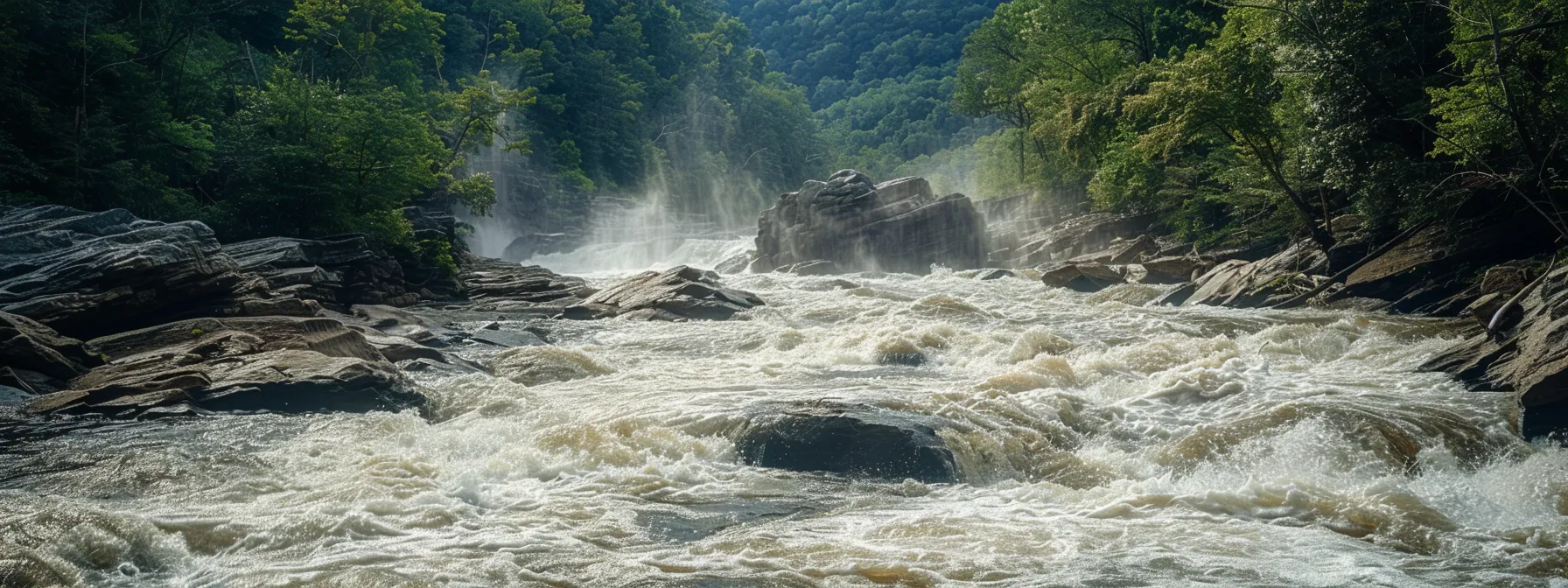
Understanding hydrology is crucial for experiencing the Middle Ocoee River’s unique whitewater challenges. Seasonal variations in water levels significantly influence the rapids, determining their difficulty on the international scale of river difficulty. I’ll delve into how water releases from the flume impact rafting conditions and offer tips for predicting water levels to help you plan your trip effectively.
Understanding Hydrology and Its Impact on Rafting
Understanding hydrology is crucial for enjoying the Middle Ocoee River’s whitewater challenges. Water levels, significantly influenced by the Tennessee Valley Authority‘s scheduled releases, determine the rapids‘ difficulty ratings. When planning your trip, knowing how these fluctuations impact the flow is essential to gauge risks and adapt your strategy for a safe journey on this thrilling whitewater river.
The Ocoee Whitewater Center provides valuable resources for measuring water levels before your adventure. By checking current conditions, you can better predict swimming safety and prepare for the experience that awaits you. Higher water levels often increase the intensity of the rapids, which adds excitement but also requires more caution from rafters to ensure a fun and safe experience.
Seasonal Variations in Water Levels
Seasonal variations in water levels impact the Middle Ocoee River’s rafting experience significantly. During spring and early summer, snowmelt from the surrounding Smoky Mountains leads to higher water levels, which can create intense rapids. This increase often results in exciting experiences for rafters but also requires more caution and skill to navigate through tight eddies and challenging routes. I’ve always found it beneficial to check resources like American Whitewater for real-time updates on river conditions.
As the season progresses into late summer and fall, water levels typically drop, leading to milder rapids. While this change makes the river more accessible for novice rafters, it’s important to remember that even lower water levels can still present risks. Staying informed about the different river conditions, including those on nearby rivers like the Hiwassee River and the Nantahala River, will help ensure a safe and enjoyable trip. To summarize, understanding seasonal water levels helps in planning a rafting adventure that suits your skill level and thrill-seeking desires:
- Check the water levels regularly
- Know your skill level and choose the right conditions
- Use resources like American Whitewater for information
- Adapt your experience as the season changes
How Water Releases Affect Rafting Conditions
The Tennessee Valley Authority controls water releases, which play a critical role in shaping the rafting conditions on the Middle Ocoee River. When the flow increases, it transforms the river, intensifying the rapids and changing the overall difficulty level. If you’re planning to paddle through the Cherokee National Forest, it’s important to stay updated on these releases to minimize the risk of injury and ensure a thrilling yet safe experience.
During my time rafting the Ocoee, I’ve learned that understanding water releases can also translate to better experiences on other rivers, such as the Pigeon River in North Carolina. As water levels fluctuate due to scheduled releases or rainfall, the routes and challenges change, so knowing how to read these conditions empowers rafters to adapt their strategies effectively. Preparing for varying water levels not only enhances your trip but also boosts your confidence on the water:
- Stay informed about scheduled water releases.
- Adjust your plans based on river conditions.
- Prioritize safety to avoid injury during your adventure.
- Consider similar adventures on rivers like the Pigeon River.
Predicting Water Levels for Planning Your Trip
When planning my trips on the Middle Ocoee River, I always prioritize checking the predicted water levels. There are several online resources that provide up-to-date information, which are invaluable for gauging the difficulty of the rapids. If you’re considering a trip during the spring, for instance, be prepared for intense conditions due to snowmelt, and don’t forget your wetsuit for extra warmth and protection in colder water. Understanding seasonal changes allows me to align my skill level with the river conditions, making my outdoor recreation experiences both thrilling and safe.
Additionally, checking local FAQs about water release schedules from the Tennessee Valley Authority is key to my trip planning. This helps me anticipate water flow changes, ensuring a safer adventure for everyone in my canoe. Living in East Tennessee, I’ve also learned to look out for nearby rivers that may have different conditions. This knowledge allows me to make informed decisions, choosing rivers that match my experience and preferences while enjoying the beautiful Tennessee landscapes.
Water levels shape every journey down the Middle Ocoee River. Let’s examine how each rise and fall presents its own set of challenges for adventurers.
Analyzing the Challenges at Different Water Levels

Analyzing the Challenges at Different Water Levels
Low water levels on the Middle Ocoee River present increased technical difficulty, requiring careful navigation of obstacles. When conditions are optimal, the river offers thrilling experiences for all skill levels. However, high water levels bring stronger currents and more challenging rapids, emphasizing the need for an experienced guide. Whether you’re in your swimsuit ready for action, or exploring the Chattooga River in North Georgia, understanding these variations will enhance your adventure.
Low Water Levels: Increased Technical Difficulty
When I encountered low water levels on the Middle Ocoee River, I quickly realized that these conditions require heightened technical skills. Navigating through rocks and other obstacles becomes more challenging, and having the right gear is essential for safety and success. I’ve found that using a well-designed raft can make a significant difference in maneuverability, allowing for better handling in tight spots.
Additionally, low water levels mean that certain sections of the river may become more shallow, which can limit our options during a rafting trip. It’s vital to be aware of water levels to avoid unexpected hazards and ensure an enjoyable experience. My advice is to always keep an eye on the flow rates and remember that adjusting your strategy based on real-time conditions is crucial for tackling the unique challenges presented by lower water levels:
- Enhance your navigation skills for tricky routes.
- Invest in the right raft for better stability.
- Stay informed about water levels before hitting the river.
Optimal Water Levels: Ideal Conditions for Thrills
Optimal water levels on the Middle Ocoee River typically range between 1,500 to 3,500 cubic feet per second (cfs). In my experience, these levels create exhilarating conditions that enhance the rafting experience, producing exciting Class III and IV rapids that thrill both novice and experienced paddlers. I’ve found that when the water is in this ideal range, the rapids are not only more dynamic but also allow for more playful maneuvers, making it a perfect time for families and adventure seekers to experience the river’s beauty safely.
During trips at optimal water levels, I notice that the river’s flow allows for smoother navigation and a lower risk of encountering substantial obstacles like rocks. This balance enables us to focus more on enjoying the swift currents and the natural surroundings rather than constantly maneuvering to avoid hazards. Having the right gear, such as durable rafts and personal flotation devices, becomes even more critical, as these assure a memorable adventure filled with excitement and safety. Trust me, rafting during these ideal water levels offers a perfect blend of thrill, scenery, and enjoyment that keeps everyone coming back for more.
High Water Levels: Navigating Stronger Currents and Rapids
High water levels on the Middle Ocoee River present unique challenges that can significantly enhance the rafting experience. The increased flow transforms the river, producing stronger currents and more aggressive rapids. I’ve noticed that when the water reaches higher levels, it often pushes us through sections that require sharp maneuvering and quick decisions, adding an adrenaline rush to every turn.
Navigating high water rapids demands a higher skill level from all participants. It is crucial to follow the guidance of experienced rafting guides who know the river well. During my time on the water, I’ve learned that maintaining a low center of gravity in the raft helps keep us stable as we ride the waves. Understanding these dynamics not only improves safety but also amplifies the thrill, ensuring that our adventure on the Middle Ocoee remains unforgettable.
The river churns differently at each level, revealing new challenges. Knowing how to navigate these waters safely is key to enjoying every moment on the Ocoee.
Safety Measures for Rafting at Various Water Levels
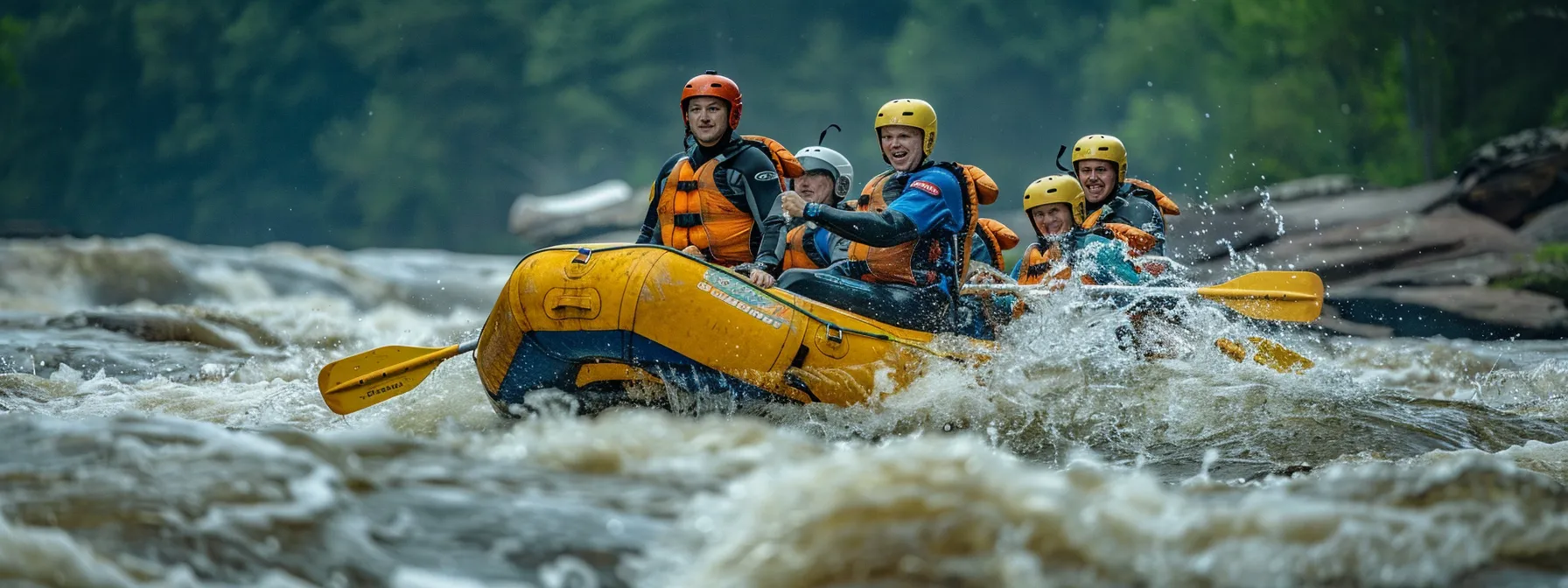
Having the right essential gear is crucial for different water conditions when rafting the Middle Ocoee River. It directly impacts safety and enjoyment. Additionally, skilled guides are vital during fluctuating water levels, ensuring a fun experience while navigating challenges. I recommend that first-time rafters prepare adequately and follow precautions to enhance their adventure. Each of these factors contributes to a successful and memorable trip.
Essential Gear for Different Water Conditions
When rafting on the Middle Ocoee River, having the right gear is essential for safety and enjoyment, especially as water levels change. For high water levels, I make sure to wear a personal flotation device (PFD) that fits securely and provides enough buoyancy to keep me safe in stronger currents. Additionally, a well-fitted helmet protects against any unexpected collisions with rocks or branches, which can be more common in higher flows.
During lower water conditions, I’ve learned that a sturdy raft is vital for navigation through shallow areas and rocky obstacles. I prefer a raft designed for technical maneuvering, as it enhances stability and control when dealing with challenging sections. Furthermore, wearing appropriate footwear with good traction helps me maintain my footing on slippery surfaces while entering or exiting the raft. These thoughtful choices not only enhance my experience but also ensure that I can enjoy the adventure safely, regardless of the river conditions.
Importance of Skilled Guides During Fluctuating Water Levels
Having skilled guides during fluctuating water levels on the Middle Ocoee River is essential for ensuring safety and enhancing the overall experience. Experienced guides possess in-depth knowledge of the river’s conditions and challenges, allowing them to navigate the changing dynamics of the water effectively. On my rafting adventures, I’ve seen firsthand how guides can read the river and adjust our route, helping us avoid hazards and maximize our fun.
When water levels rise or fall, the rapids transform, requiring quick decision-making and proficient skills to handle the stronger currents. Professional guides are trained to react swiftly to these changes, ensuring that all participants remain safe and engaged. They not only provide expert navigation but also techniques for paddling and effectively responding to the river’s demands, which makes a significant difference in the enjoyment of our rafting trips. Here’s what I consider important about having skilled guides during different water conditions:
- Guides help navigate changing water levels effectively.
- They enhance safety by quickly adapting routes.
- Guides teach techniques for managing stronger currents.
- They ensure all participants are engaged and informed.
Preparation and Precautions for First-Time Rafters
As a first-time rafter on the Middle Ocoee River, preparation is key for a safe and enjoyable experience. I always recommend investing time to learn about the river’s challenges and dynamics related to water levels. Understanding how these fluctuations can impact rapids not only eases anxiety but also helps build the confidence needed to navigate effectively.
Additionally, wearing the right safety gear is crucial for first-timers. I’ve seen how a well-fitted personal flotation device and a protective helmet can make a significant difference in ensuring safety. Following the guidance of experienced rafting instructors, who can offer essential tips tailored to the current water conditions, adds an extra layer of confidence as you embark on your adventure.
Understanding safety measures is only the beginning. Next, we’ll look at how different water levels change the thrill of rafting on the Middle Ocoee.
Impact of Water Levels on Middle Ocoee Rafting Experience

Adapting rafting techniques to varying water levels is essential for a successful trip on the Middle Ocoee River. The relationship between water levels and enjoyment can dramatically influence your experience. In this section, I’ll share memorable case studies that highlight unique rafting experiences at different water levels, providing practical insights for future adventurers.
Adapting Rafting Techniques for Water Level Variations
Adapting my rafting techniques based on water levels is vital for enjoying the Middle Ocoee River. When water levels are high, I focus on maintaining a low center of gravity and responding quickly to changes in current. This involves making sharp turns and using precise paddling to navigate through turbulent sections while enjoying the thrilling experience that comes with stronger rapids.
Conversely, during lower water conditions, I adjust my approach by being more strategic in my navigation. I pay attention to the placement of my raft, avoiding shallow spots and rocks that can lead to unexpected challenges. This thoughtful approach not only enhances safety but also allows for a more enjoyable journey through the river’s twists and turns, ensuring I make the most out of each rafting adventure:
- Stay agile and responsive in high water by maintaining a low center of gravity.
- Focus on precise paddling techniques to navigate robust currents.
- Be strategic in low water by avoiding obstacles and shallow areas.
- Adjust your approach based on real-time water conditions for a safe experience.
The Relationship Between Water Levels and Enjoyment
The relationship between water levels and enjoyment on the Middle Ocoee River is striking. When water levels are optimal, I experience a thrilling balance between excitement and safety. These conditions often translate into dynamic rapids that invite both seasoned adventurers and beginners to revel in the river’s beauty while navigating its twists and turns.
Conversely, extremely high or low water levels can drastically affect the overall experience. During my travels on the river, I’ve noticed that high water brings fierce rapids that demand advanced skills and can increase the stress of navigating hazards. To fully enjoy my time on the water, I’ve learned to align my skill level with the changing conditions, ensuring that every adventure is memorable and exhilarating.
- Optimal water levels enhance excitement and safety.
- High water can challenge navigation skills and increase stress.
- Aligning skill level with water conditions is key for enjoyment.
Case Studies: Memorable Rafting Experiences at Different Water Levels
During one memorable spring trip on the Middle Ocoee River, I encountered exhilarating high water levels after a heavy rainfall. The river surged to about 3,200 cubic feet per second, creating intense Class IV rapids that demanded quick reflexes and teamwork. As my group skillfully navigated through the churning waters, I felt the adrenaline rush and the thrill of overcoming challenging obstacles, which made for an unforgettable adventure.
On another occasion, I experienced rafting at lower water levels in late summer, where the river flowed around 1,500 cubic feet per second. Although the rapids were milder, this scenario required a different set of navigation skills to avoid shallow spots and submerged rocks. I found it rewarding to adapt my approach and emerge from the trip with a newfound appreciation for the river’s unique characteristics at various levels.
As we look at the water levels now, we see their effects on the adventure. The future holds promise, and understanding what lies ahead is key for every thrill-seeker.
Future Outlook: Water Levels and Rafting on the Ocoee River
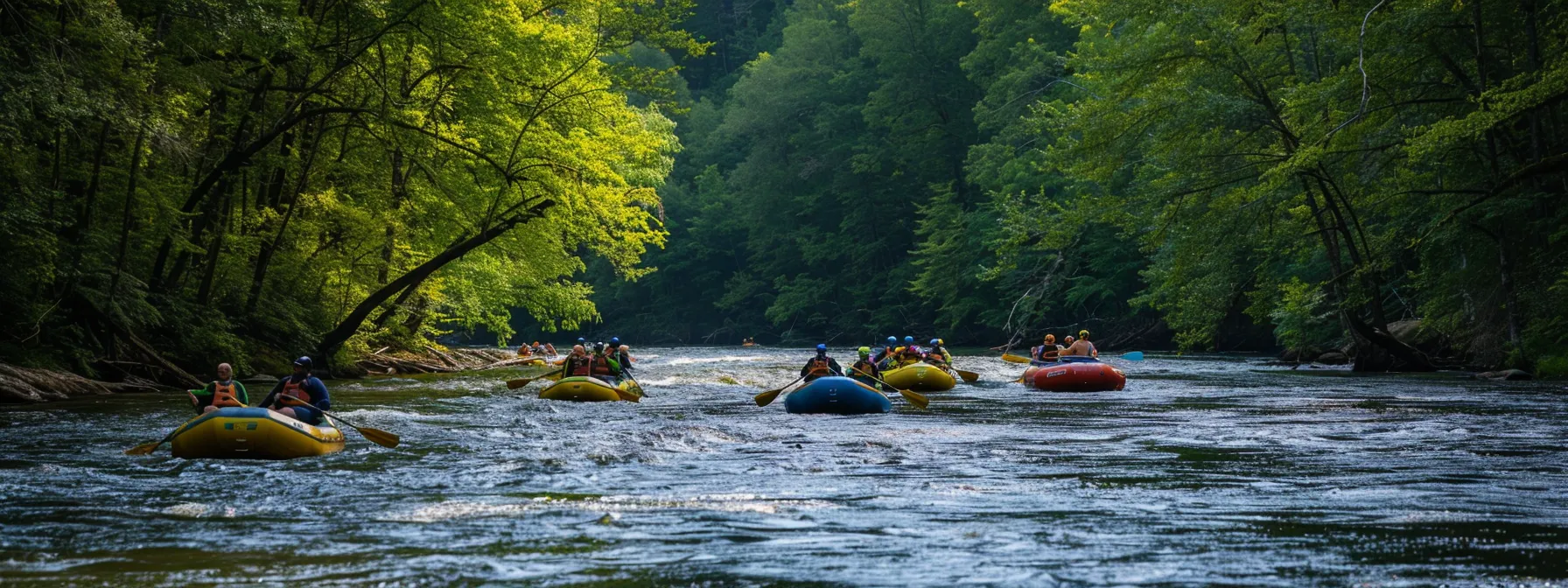
Projected changes in climate pose challenges for the Middle Ocoee River, potentially impacting water levels and rafting conditions. I will explore how conservation efforts aim to maintain the ideal conditions for rafting. Additionally, I’ll discuss the role of dams and controlled releases in sustaining exciting rafting adventures, ensuring safety and enjoyment for all enthusiasts.
Projected Changes in Climate and Their Potential Effects on Rafting
As an adventure enthusiast, I’ve observed that projected changes in climate can greatly impact the water levels of the Middle Ocoee River, thus affecting our rafting experiences. Altered precipitation patterns could lead to either increased rainfall in some seasons or drier conditions in others. This variability not only impacts the flow rates but also challenges rafters to adapt their skills and strategies to ensure a fun and safe experience.
Adapting to these climate shifts requires us to stay informed about changes that affect rafting conditions. For instance, understanding how increased rainfall can contribute to stronger flows can help us prepare better for those tricky rapids. Staying connected with updates from reliable sources will help us navigate the dynamic environment of the river effectively, ensuring that each trip is both enjoyable and safe. Here’s what I keep in mind:
- Be aware of climate-induced changes in precipitation.
- Stay informed about potential fluctuations in water levels.
- Adapt your rafting techniques based on updated information.
Conservation Efforts to Maintain Ideal Rafting Conditions
In my experience as an adventure enthusiast, conservation efforts play a vital role in maintaining the ideal rafting conditions on the Middle Ocoee River. Organizations work to monitor and protect the river’s ecosystem while ensuring that water levels remain suitable for both safety and enjoyment during rafting excursions. By collaborating with local and regional groups, we can raise awareness about the need for sustainable practices that balance recreation with the health of the river.
Additionally, understanding the significance of controlled water releases from dams is crucial for enhancing our rafting experiences. These carefully managed releases help sustain optimal flow rates, thereby ensuring that we can navigate the river safely and enjoyably throughout various seasons. As I participate in these initiatives, I encourage fellow rafters to advocate for conservation measures that protect our rivers for future generations of adventurers.
The Role of Dams and Controlled Releases in Sustaining Rafting Adventures
The management of dams and controlled water releases is essential for ensuring optimal rafting conditions on the Middle Ocoee River. I’ve seen firsthand how these controlled releases can maintain a consistent water flow, which not only enhances the rafting experience but also preserves the natural ecosystem. By carefully regulating the water levels, the Tennessee Valley Authority creates conditions that cater to both adventure seekers and novice paddlers, allowing us to enjoy our adventures safely.
When I plan my rafting trips, I always keep an eye on the release schedules from local dams. These releases play a crucial role in shaping the rapids and determining the overall difficulty of the river. Understanding how these controlled flows impact my experience helps me prepare effectively, ensuring that I can tackle the challenges of the rapids while enjoying the beauty of the Ocoee River:
- Controlled releases stabilize water levels for safe rafting.
- They enhance the rafting experience by balancing flow rates.
- Awareness of release schedules informs trip planning.
- Optimal conditions cater to various skill levels.
Water levels will rise and fall, but the thrill of rafting remains constant. Let’s turn our attention to how you can prepare for your Middle Ocoee adventure, ensuring every moment on the river is unforgettable.
Preparing for Your Middle Ocoee Rafting Adventure
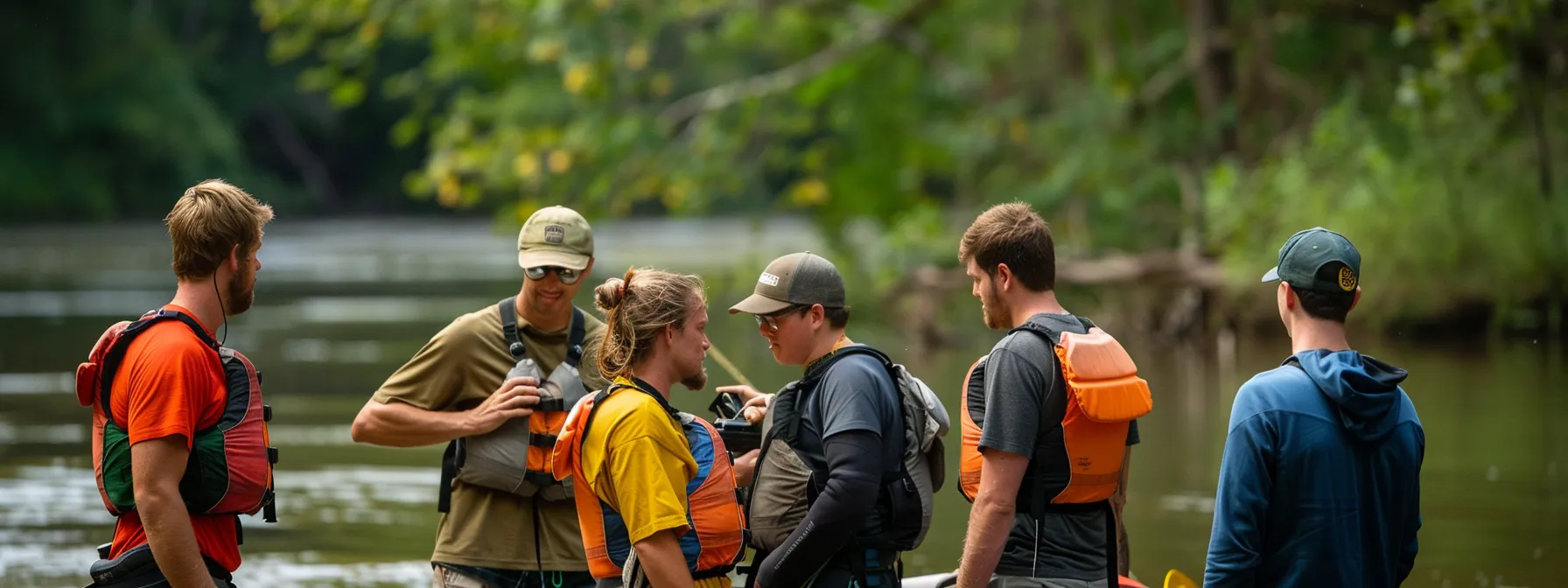
Before embarking on my adventure on the Middle Ocoee River, I always check the water levels using reliable resources. Knowing when to go for my skill level is crucial, as different times of the year present varying conditions. I also find personal accounts from seasoned rafters valuable; their experiences provide insights that help me prepare effectively and enjoy the thrill of rafting safely.
Checking Water Levels Before Your Trip: Resources and Tips
Before setting out for my middle ocoee river rafting adventure, I always make it a point to check the water levels. This ensures I’m prepared for the conditions I’ll face, whether the rapids will be mild or intense. I typically use reliable resources like the American Whitewater website or the Ocoee Whitewater Center, as they provide real-time updates that help gauge the difficulty level of the rapids.
In addition to these websites, I also keep a close eye on local weather forecasts, as they can affect water levels significantly. For instance, if there’s recent rainfall, I prepare for potentially higher flows that can change the river dynamics. By doing this, I can strategically plan my trip, which enhances both my safety and enjoyment on the water:
- Check online resources for current water levels.
- Stay updated on local weather conditions.
- Adjust your trip plans based on water flow forecasts.
- Consider your skill level in relation to current water conditions.
Choosing the Right Time of Year for Your Skill Level
Choosing the right time of year for your Middle Ocoee rafting adventure can significantly enhance your experience and safety. In spring, when snowmelt increases water levels, expect Class III and IV rapids that can be thrilling for experienced rafters. However, if you’re a beginner, I recommend scheduling your trip later in the summer when water levels drop, leading to milder conditions that are more manageable for those new to rafting.
Understanding the seasonal changes in water levels allows you to align your skill level with the river’s challenges. For instance, during higher flows, I focus on quick reflexes and precise maneuvering, while lower levels require keen navigation to avoid rocks and shallow spots. I always suggest checking resources for accurate water level forecasts to ensure that your chosen time aligns with your experience, promoting both thrill and safety during your rafting journey:
- Plan trips in spring for intense rapids suited for experienced rafters.
- Opt for summer trips if you’re a novice to enjoy milder conditions.
- Align your skill level with water levels for a safer experience.
- Check resources regularly for accurate water level forecasts.
What to Expect: Personal Accounts From Seasoned Rafters
When embarking on my Middle Ocoee River rafting adventures, I’ve found that hearing personal accounts from seasoned rafters can be incredibly beneficial. These stories often highlight how varying water levels shape the experience, providing insights on how to navigate challenges effectively. For instance, one rafter recounted their thrilling ride through Class IV rapids during high water conditions, emphasizing the need for swift decision-making and teamwork to tackle the intense currents.
Furthermore, seasoned rafters shared practical tips that transformed their trips into memorable journeys. They highlighted the importance of choosing the right time to raft based on water levels, as one experienced rafter noted how planning a summer trip yielded a more manageable rafting experience compared to the adrenaline-pumping conditions in spring. Understanding these firsthand experiences not only builds confidence but also equips new adventurers with the knowledge necessary for a safe and enjoyable outing on the river:
- High water levels demand quick reflexes for successful navigation.
- Summer rafting tends to offer milder conditions appropriate for beginners.
- Listening to experienced rafters can provide valuable preparation insights.
Conclusion
Understanding the impact of water levels on Middle Ocoee River rafting is crucial for both safety and enjoyment. By recognizing seasonal variations and how water releases affect rapids, adventurers can better prepare for their trips and select conditions that match their skill levels. Staying informed about water levels and adapting strategies accordingly enhances the overall rafting experience, ensuring a thrilling yet safe adventure. Ultimately, informed decision-making empowers rafters to navigate the challenges of the Ocoee River confidently, making every outing a memorable one.

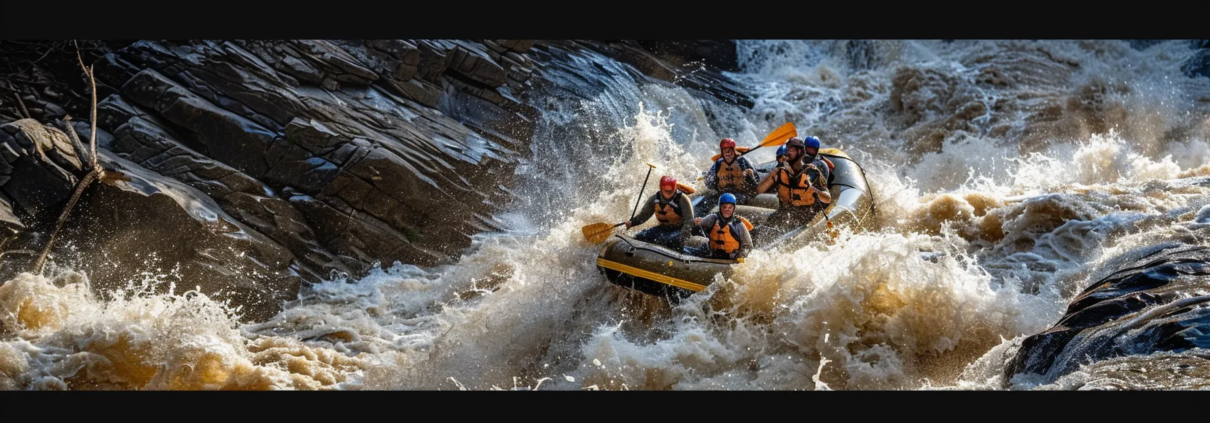


Leave a Reply
Want to join the discussion?Feel free to contribute!